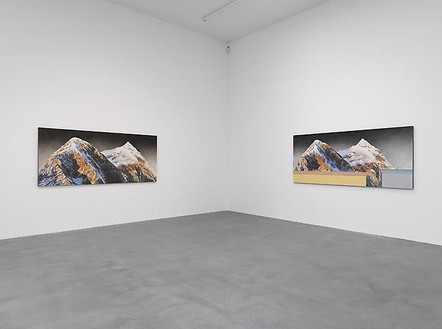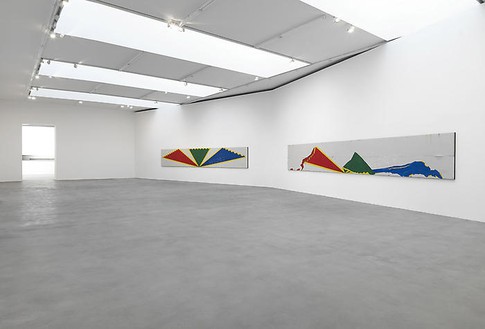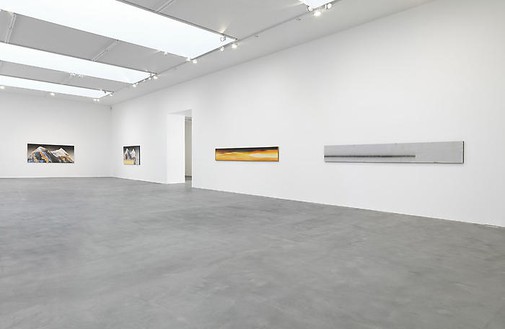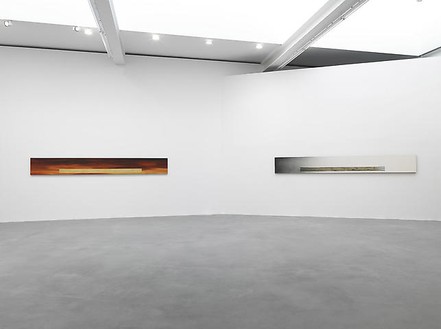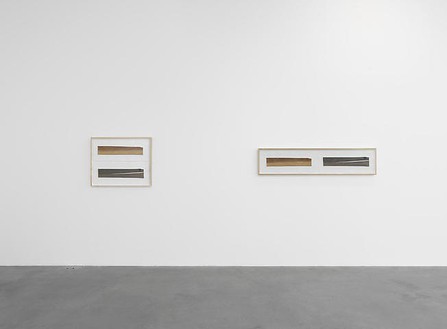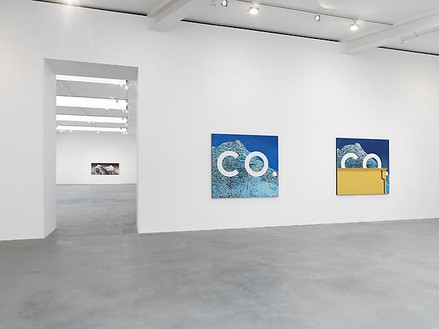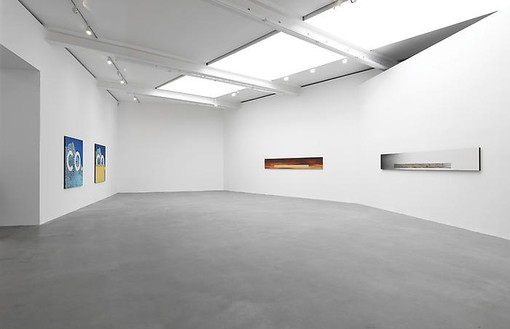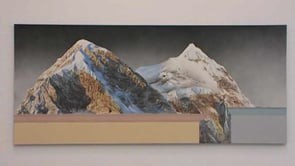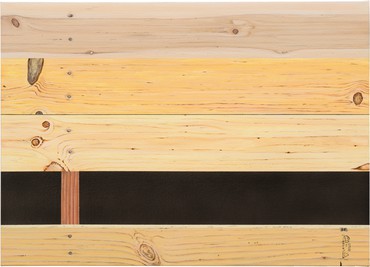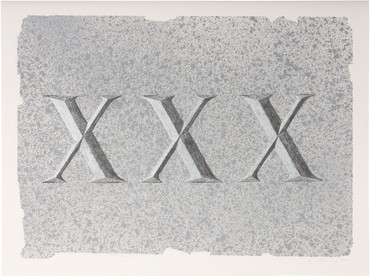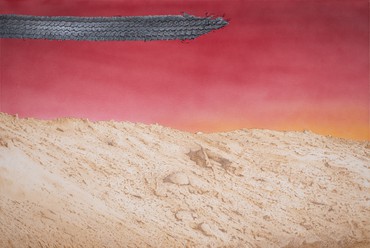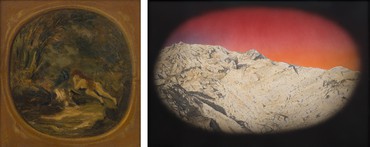About
You take one painting as a kind of question and then the answer to that would be, they’re look-alikes. They begin to look like one another and they do not look like one another, because they have to, or they’re not going to be a proper answer. And then, when you look at them, they’re no longer interpreted in a philosophical sense—or an apocalyptical sense. If you give the viewer something to compare, you don’t have to interpret.
—Ed Ruscha
Gagosian is pleased to present five pairs of paintings by Ed Ruscha.
From Course of Empire—the exhibition for the United States Pavilion at the 51st Biennale di Venezia (2005), which traveled to the Whitney Museum of American Art in New York—to photographic books such as Then and Now (2005), Ruscha has structured certain bodies of work as comparative studies. Revisiting sites, buildings, and views of Los Angeles that had formed the bases for previous works, he documented the effects of time in a manner that was both empirical and metaphorically charged. Ruscha describes this process as one of “waste and retrieval.” Continuing in this vein of investigation, in the current exhibition he pairs one painting with another version of the same subject to create finely nuanced exercises in perception and memory.
Similar in subject and form, each pair of related works reveals through close observation differences both subtle and dramatic. The effects of the passing of time or of visible decay, movement, and corrosion are at the core of these paintings, which reflect on how things are transformed by nature or culture, from a plank of wood that has decomposed over time to a picturesque view of a mountain range that has been disrupted by the construction of a building.
Share

Flags
Gillian Pistell writes on the loaded symbol of the American flag in the work of postwar and contemporary artists.

Donald Marron
Jacoba Urist profiles the legendary collector.
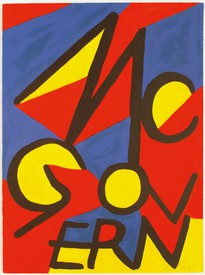
The Art History of Presidential Campaign Posters
Against the backdrop of the 2020 US presidential election, historian Hal Wert takes us through the artistic and political evolution of American campaign posters, from their origin in 1844 to the present. In an interview with Quarterly editor Gillian Jakab, Wert highlights an array of landmark posters and the artists who made them.
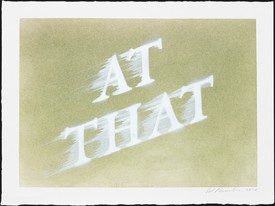
“Things Fall Apart”: Ed Ruscha’s Swiped Words
Lisa Turvey examines the range of effects conveyed by the blurred phrases in recent drawings by the artist, detailing the ways these words in motion evoke the experience of the current moment.

Artists’ Magazines
Gwen Allen recounts her discovery of cutting-edge artists’ magazines from the 1960s and 1970s and explores the roots and implications of these singular publications.
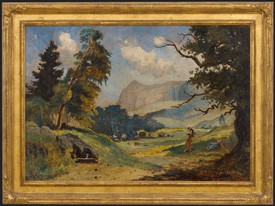
Eilshemius and Me: An Interview with Ed Ruscha
Ed Ruscha tells Viet-Nu Nguyen and Leta Grzan how he first encountered Louis Michel Eilshemius’s paintings, which of the artist’s aesthetic innovations captured his imagination, and how his own work relates to and differs from that of this “Neglected Marvel.”
News

Artist Spotlight
Ed Ruscha
September 16–22, 2020
At the start of his artistic career, Ed Ruscha called himself an “abstract artist . . . who deals with subject matter.” Abandoning academic connotations that came to be associated with Abstract Expressionism, he looked instead to tropes of advertising and brought words—as form, symbol, and material—to the forefront of painting. Working in diverse media with humor and wit, he oscillates between sign and substance, locating the sublime in landscapes both natural and artificial. Ruscha’s formal experimentations and clever use of the American vernacular have evolved in form and meaning as technology alters the essence of human communication.
Photo: Kate Simon

galleryplatform.la
Ed Ruscha
Drum Skins
May 28–June 30, 2020
Gagosian is pleased to present recent paintings by Ed Ruscha online for galleryplatform.la. Fifty years ago, Ruscha purchased a set of vellum drum skins from a leather shop in Los Angeles. He has continued to collect these vintage objects, and since 2011 he has used them as canvases for the works on view in his solo exhibition Drum Skins at the Blanton Museum of Art at the University of Texas at Austin.
Installation view, Ed Ruscha: Drum Skins, Blanton Museum of Art, University of Texas at Austin, January 11–October 4, 2020. Artwork © Ed Ruscha
